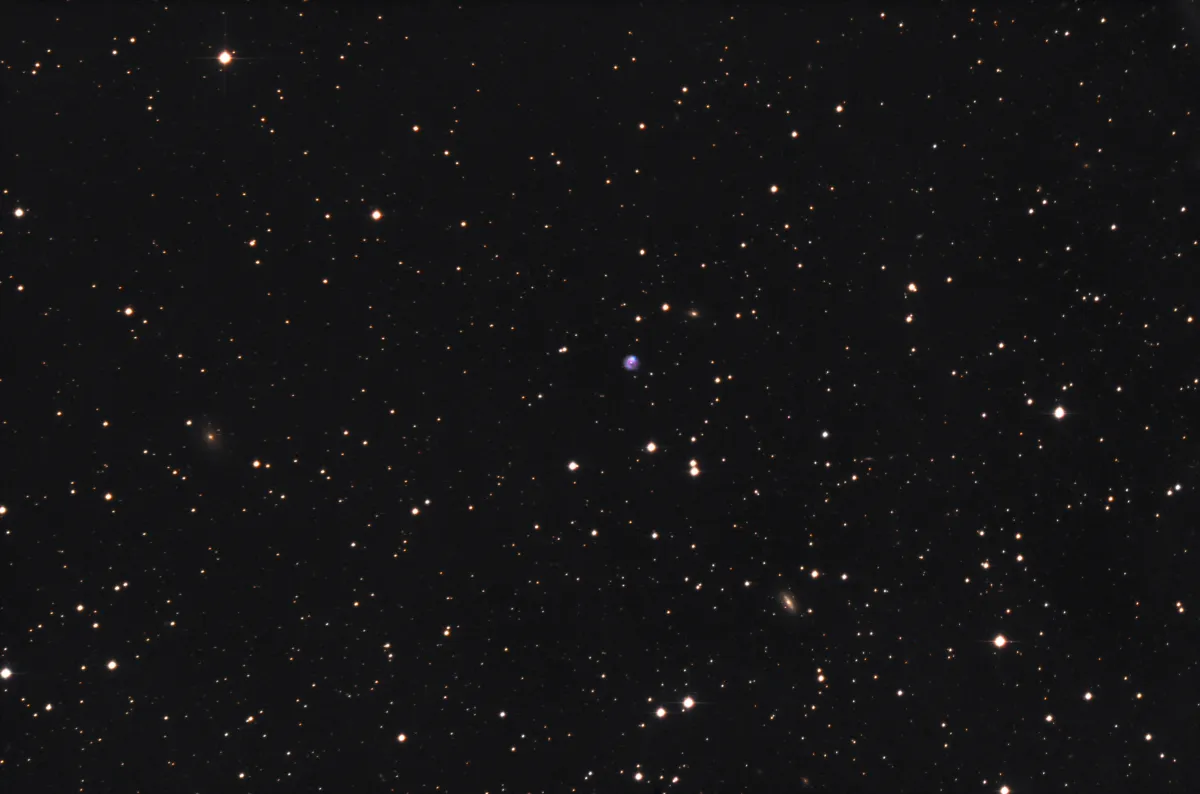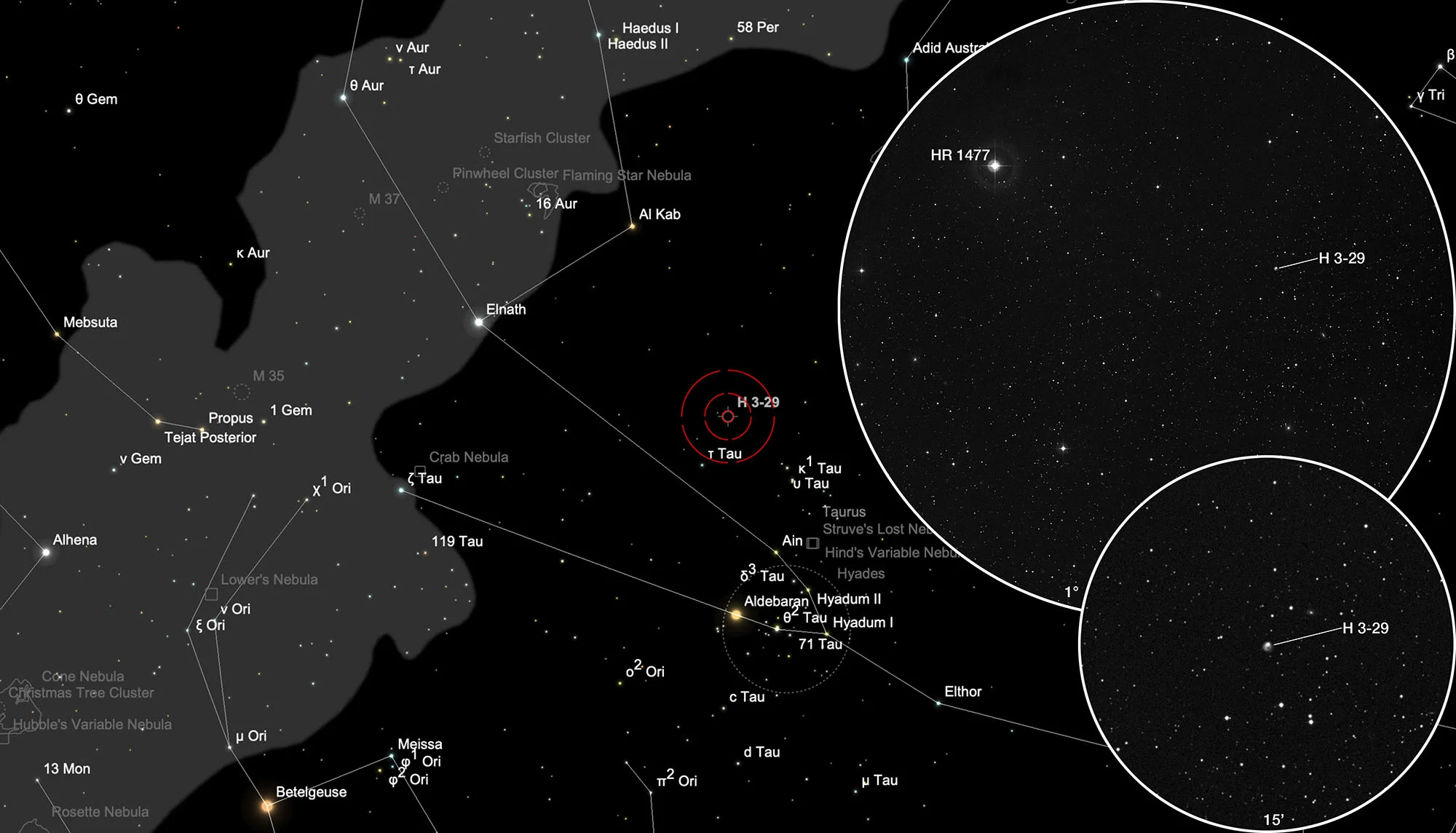Planetary Nebula Haro 3-29

History
In 1953, the Mexican astronomer Guillermo Haro Barraza examined the Taurus-Auriga-Orion region with the 64 cm Schmidt camera at the Tonantzintla Observatory in Mexico. Previously, Alfred Harrison Joy at the Mount Wilson Observatory had discovered numerous stars with strong Hα emission lines, so-called T-Tauri stars. These are young stars that are uneven from a disk of dust. Haro discovered 75 more Hα stars on the photo plates exposed for up to 90 minutes. To number 29 he added the following note: «Emission nebula. The light lines N1 and N2 are present.» [451] The American astronomer Nicholas Ulrich Mayall finally recognized in 1964 that this was a planetary nebula. [144]
Physical Properties
On Simbad, a distance of around 4.6 kpc (around 15'000 light years) is found. The apparent brightness in different bands is: B = 15.7 mag, J = 14.5 mag, H = 13.8 mag, K = 12.9 mag. [145]
| Designations | PN G174.2-14.6: H 3-29, PK 174-14.1, ARO 214 |
| Right Ascension (J2000.0) | 04h 37m 21s |
| Declination (J2000.0) | +25° 03' 00" |
| Dimensions | 20." (optical), 17." (radio) |
| Radial Velocity | -19.9 ± 2.0 km/s |
| C-Star Designations | AG82 33, GL Tau |
| C-Star Magnitude | B: >18.8, V: >18.6 |
| Discoverer | MAYALL 1964 |
Finder Chart
The planetary nebula Haro 3-29 is located in the constellation Taurus. The 6.2 mag bright star HR 1477 helps to find it, from which you hop west to the PN. On 4 December it is in opposition to the Sun and crosses the meridian at local midnight. The best observation time is August to May.
